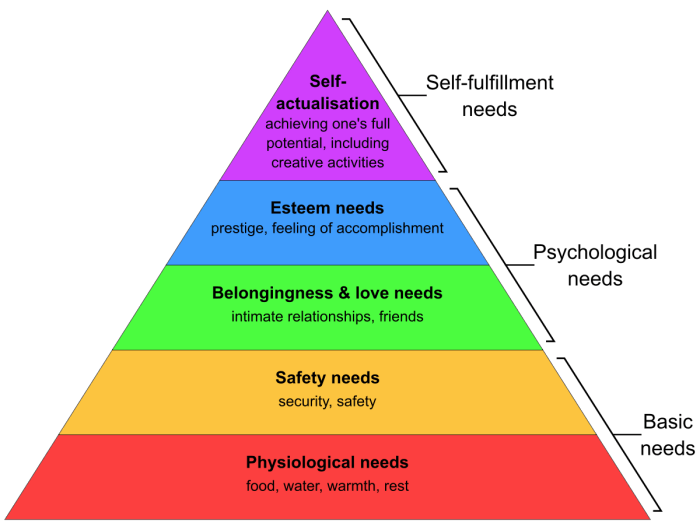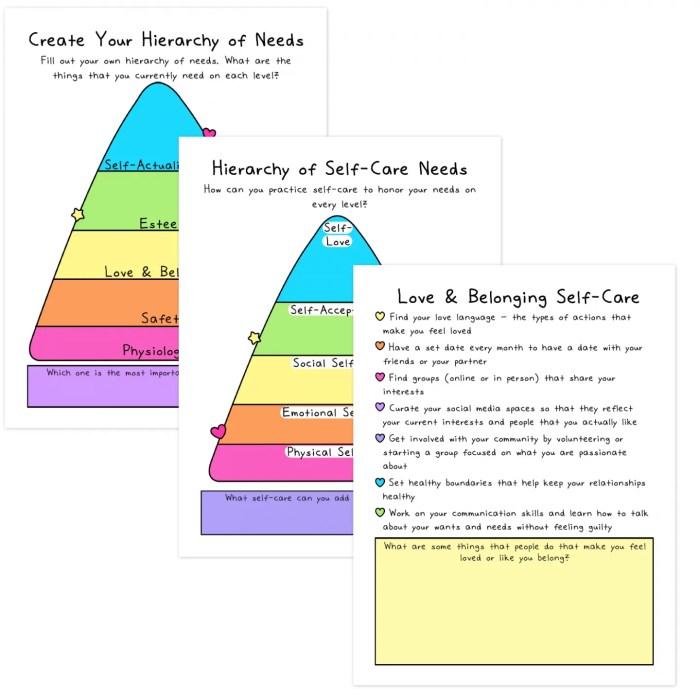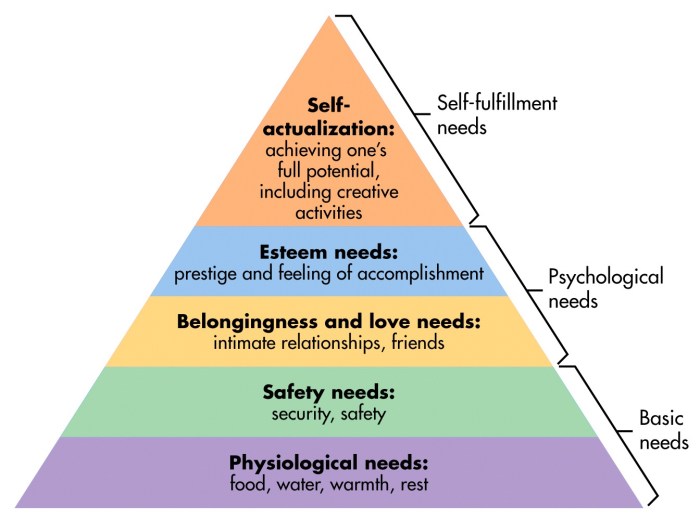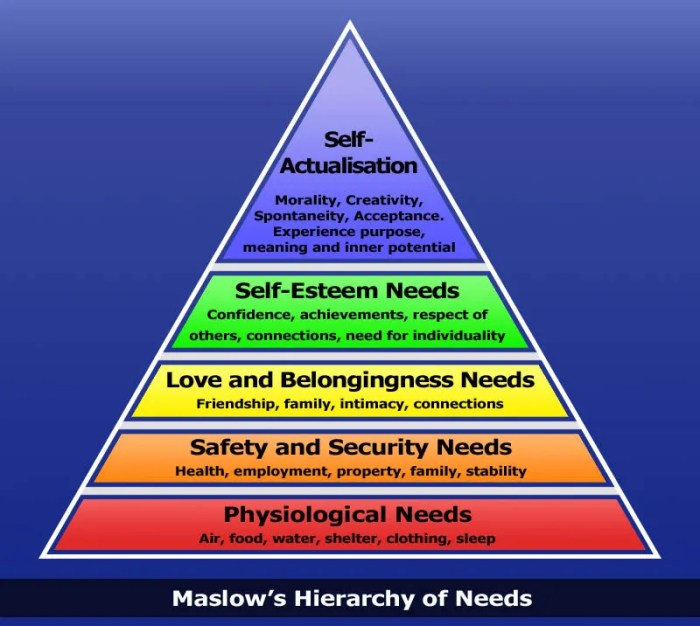Activities for maslow’s hierarchy of needs – Maslow’s hierarchy of needs, a fundamental concept in psychology, proposes that human motivation is driven by a series of hierarchical needs, ranging from basic physiological requirements to the pursuit of self-actualization. This article explores the intricate relationship between these needs and the activities that fulfill them, providing a comprehensive guide to understanding and meeting the needs of individuals.
The following sections delve into each level of Maslow’s hierarchy, outlining specific activities that contribute to overall well-being, security, love, belonging, self-esteem, and self-actualization. By engaging in these activities, individuals can embark on a journey towards self-discovery, personal growth, and the realization of their full potential.
Maslow’s Hierarchy of Needs and Activities

Maslow’s hierarchy of needs posits that human behavior is driven by a series of needs that are arranged in a hierarchical order. These needs, from the most basic to the most complex, include physiological, safety, love and belonging, esteem, and self-actualization.
Activities that fulfill these needs play a crucial role in overall well-being and personal growth.
Physiological Needs Activities
Physiological needs are the most basic and essential for survival. They include food, water, shelter, sleep, and other basic necessities. Activities that satisfy these needs contribute to physical health and overall well-being.
| Physiological Need | Activity |
|---|---|
| Food | Eating nutritious meals, preparing healthy snacks |
| Water | Drinking sufficient fluids, staying hydrated |
| Shelter | Having a safe and comfortable place to live |
| Sleep | Getting adequate rest, establishing regular sleep patterns |
| Other | Exercise, maintaining personal hygiene, seeking medical care |
Safety and Security Activities
Safety and security needs involve feeling secure and protected from physical, emotional, and financial threats. Activities that promote safety and security contribute to a sense of stability and peace of mind.
- Maintaining a safe home environment
- Locking doors and windows, using security systems
- Building strong relationships with family and friends
- Saving money for emergencies, having health insurance
- Seeking therapy or counseling to address emotional concerns
Love and Belonging Activities
Love and belonging needs involve feeling connected to others and being part of a community. Activities that foster love and belonging contribute to emotional well-being and a sense of purpose.
| Love and Belonging Category | Activity |
|---|---|
| Family | Spending time with family members, attending family events |
| Friends | Socializing with friends, participating in group activities |
| Romantic relationships | Nurturing a healthy romantic relationship |
| Community involvement | Volunteering, participating in community organizations |
Esteem Activities
Esteem needs involve feeling valued and respected by oneself and others. Activities that contribute to self-esteem boost confidence and self-worth.

The flowchart above illustrates activities that contribute to self-esteem. These activities include setting goals, achieving personal accomplishments, and receiving external recognition. They help individuals develop a positive self-image and a sense of competence.
Self-Actualization Activities, Activities for maslow’s hierarchy of needs
Self-actualization needs involve realizing one’s full potential and living a meaningful life. Activities that facilitate self-actualization help individuals reach their full potential.
- Pursuing creative pursuits, such as art, music, or writing
- Engaging in personal growth activities, such as reading, learning new skills
- Finding meaningful work that aligns with one’s values and interests
- Giving back to the community through volunteerism or philanthropy
- Setting ambitious goals and striving to achieve them
FAQ Section: Activities For Maslow’s Hierarchy Of Needs
What are the key levels of Maslow’s hierarchy of needs?
Maslow’s hierarchy of needs consists of five levels: physiological needs, safety and security needs, love and belonging needs, esteem needs, and self-actualization needs.
How can activities contribute to fulfilling each level of the hierarchy?
Activities that fulfill physiological needs include eating, drinking, and sleeping. Activities that promote safety and security include seeking shelter, building relationships, and engaging in self-defense. Activities that foster love and belonging include spending time with loved ones, participating in social groups, and volunteering.
Activities that contribute to self-esteem include setting goals, achieving milestones, and receiving recognition. Activities that facilitate self-actualization include pursuing personal interests, developing talents, and engaging in creative endeavors.


